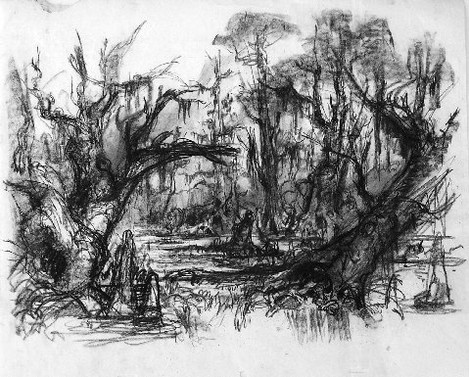Lord of the Rings - The Making Of - Part 2
- Tia

- Sep 14, 2022
- 2 min read
Excerpt from the Ralph Bakshi Art Book titled 'UNFILTERED - THE COMPLETE RALPH BAKSHI' By Jon Gibson and Chris McDonnell. Published by RIZZOLI

(cont'd)
Ralph appealed to Saul Zaentz, whose Fantasy Records helped finance
Fritz the Cat and Heavy Traffic with soundtrack deals and whose Fantasy
Films had just won an Academy Award for One Flew Over the Cuckoo's
Nest. "Zaentz wrote MGM a check to cover their debt, and then agreed to
foot the entire $8 million budget for my film."
"I didn't own the rights to the bible, but now we had the rights to the other
greatest story ever told, " Ralph laughs.

Before starting, Ralph and Zaentz insisted that the Tolkien estate receive
residuals and got the blessing of Tolkien's daughter, Priscilla Anne Reuel.
"Priscilla was a doll," Ralph says. "She said that her father would be proud
of how I was approaching the film, and she even showed me his writing
studio at Pembroke College. It was untouched since his death. As an artist,
that was a surreal experience."

Ralph knew audiences wouldn't buy into a broad, cartoon version of Rings,
because Tolkien's world demanded realism in its rendering - but even the
best artists have difficultly animating believable human movement. Using
the knowledge of rotoscoping he gained on Wizards, Ralph planned to
shoot the entire picture in live-action, then animate over his actors.

In earlv 1977, Ralph was off to shoot the live-action footage in Spain
- making use of its massive, standing castles, the best horseback riders
in the world, and rolling, majestic, endless landscapes. Plus, it was cheap
He left behind a crew of trusted and new artists - Ed Hirth, Mentor Huebner, Carol Keiffer Police, Crystal Russell, Joseph Zucker - including background artist Barry Jackson to continue visual development. "Ralph
put me in a room and just said, Make art!" says Jackson.

Ralph would review character designs, model sheets, and various
production paintings assistant director John Sparey would send to him via
Federal Express and fax - but only after 18 to 20-hour days on set. "He'd
be lucky if he slept two hours a night," says wife Liz. "He was in rough
shape."

The Spanish union bosses were sticklers, bull-horning lunch breaks in the
middle of massive setups, herding hundreds of actors dressed like ores
towards craft service while cameras rolled (a scene that Ralph secretly shot
and used in the film). And Ralph nearly got trampled after falling thirty
feet from a camera crane into a horde of oncoming gypsy riders.
But that wasn't the worst of it.

The Spanish film development lab, after discovering telephone lines,
helicopters, and cars in the distance of Ralph's shots, nearly incinerated
weeks of footage. "They told my first assistant director that if that kind of
sloppy cinematography got out, no one from Hollywood would ever come back to Spain to shoot again. The entire industry would shut down. They didn't want to risk it, so they'd rather burn the film and take the heat. They didn't understand that I was shooting an animated picture, and we just weren’t going to trace all the stuff in the background - we were going to paint mountains and castles to replace'em."
TBC.....
























How did Ralph Bakshi’s decision to use Retro Bowl rotoscoping instead of traditional animation affect both the creative process and the critical reception of The Lord of the Rings compared to other animated films of that era?
In Slither io, it's not the big snake that wins. A small snake can kill a much bigger snake by making it crash into its head. This element adds suspense and surprise to the game.
The mix of passion, risk, and sheer determination behind the scenes makes the making-of story just as epic as the film itself. Can’t wait to Golf Hit see what comes next in Part 3!
The behind-the-scenes magic of "Lord of the Rings" is just mind-blowing. I actually just watched the extended editions again on Hulu https://hulu.pissedconsumer.com/review.html last weekend, and seeing how they pulled it off makes me appreciate it even more. Seriously, the dedication to miniatures and practical effects is a lost art nowadays. If you’re ever feeling burnt out creatively, studying Weta Workshop’s approach is a solid remedy.